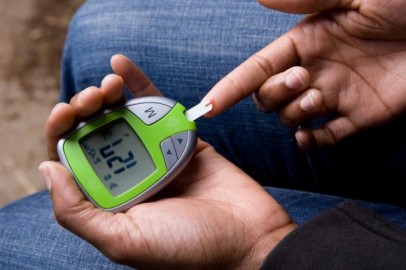Studies show that one out of seventeen adults in Nigeria are living with diabetes in Nigeria; that is about 11.2 million Nigerians. By 2045, the global number of people with diabetes is predicted to increase by 48%. When diabetes is left untreated or uncontrolled, it can damage the back of the eyes and lead to blindness.
When insulin (which controls the level of blood sugar) is not adequately produced (type 1 diabetes) or the body cannot effectively utilize the insulin it produces (type 2 diabetes -most common), too much glucose remains in the bloodstream (hyperglycemia) and can result to diabetes. Gestational diabetes occurs when high blood sugar develops during pregnancy.
Diabetes can lead to eye problems like diabetic retinopathy, diabetic macula edema, cataracts, and neovascular glaucoma. These conditions are referred to as diabetic eye disease and they can threaten vision and affect people with diabetes. The most common diabetic eye disease is diabetic retinopathy (DR). DR refers to changes in blood vessels that occur on the retina due to diabetes. Diabetic retinopathy can either be non-proliferative (where the patient has mild symptoms without the formation of new vessels) or proliferative (where abnormal new vessels are formed and the symptoms are more severe and have more visual consequences).
People at risk of having diabetic eye disease include those with uncontrolled blood glucose levels, those with diabetes for a long time, those of Asian/African-American descent or pregnant women. Usually, diabetic eye disease is without symptoms till it is severe. Some symptoms include blurry vision, floaters, fluctuating vision, impaired color vision, dark spots in vision, or poor night vision. Diabetic eye disease can only be diagnosed during a dilated, comprehensive eye examination where abnormalities on the retina are examined thoroughly using an ophthalmoscope or a slit lamp biomicroscope. Optical Coherence Tomography (OCT) and Fundus Fluorescein Angiography (FFA) can also be used to diagnose diabetic eye disease.
Proper monitoring of sugar levels with regular eye checkups is the main way of managing diabetic eye disease. Other management methods include anti-VEGF injections that help to stop the growth of new blood vessels and reduce fluid build-up, laser treatment that stops/reduces fluid leakage in the eye, and vitrectomy that is done in cases of severe hemorrhage and scar tissue formation.
You can prevent diabetic eye disease by;
1. Ensuring your blood sugar, blood pressure, and cholesterol levels are within normal range.
2. It is also important that your weight is within normal limits,
3. Eating a balanced diet and exercising regularly.
4. Quitting smoking
5. Checking your eyes regularly
6. Visiting your eye care professional as soon as you notice a change in your vision
At Viewpoint, your eye health is our priority. You can book an appointment on our website or you can visit any of our branches to get your eyes checked today.

